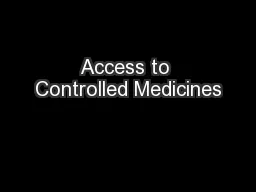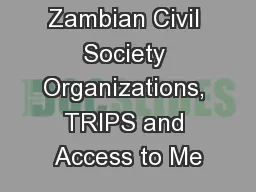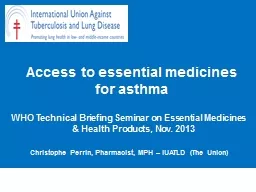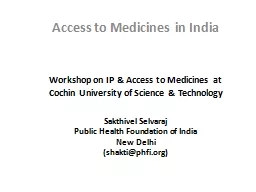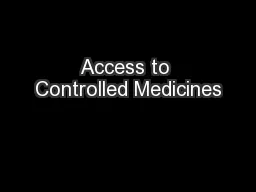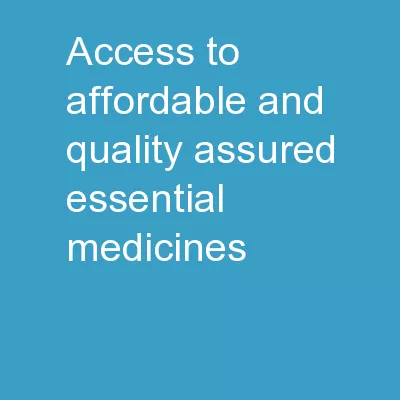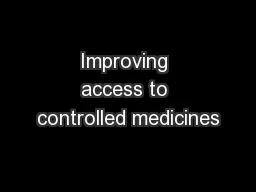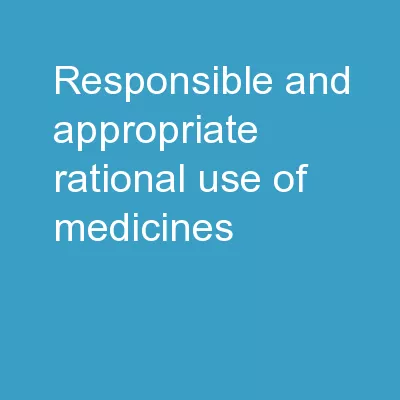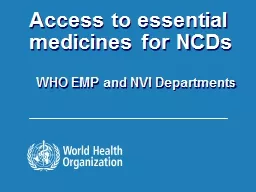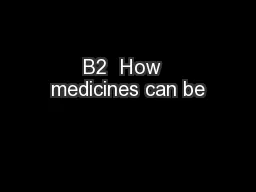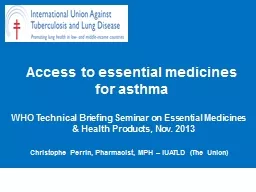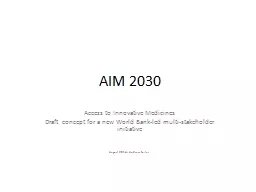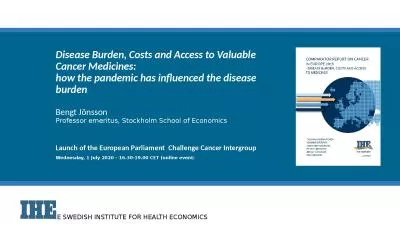PPT-Access to Controlled Medicines
Author : danika-pritchard | Published Date : 2019-03-02
Willem Scholten PharmD MPA Team Leader Access to Controlled Medicines World Health Organization Geneva Switzerland TECHNICAL BRIEFING SEMINAR Geneva 29 October
Presentation Embed Code
Download Presentation
Download Presentation The PPT/PDF document "Access to Controlled Medicines" is the property of its rightful owner. Permission is granted to download and print the materials on this website for personal, non-commercial use only, and to display it on your personal computer provided you do not modify the materials and that you retain all copyright notices contained in the materials. By downloading content from our website, you accept the terms of this agreement.
Access to Controlled Medicines: Transcript
Download Rules Of Document
"Access to Controlled Medicines"The content belongs to its owner. You may download and print it for personal use, without modification, and keep all copyright notices. By downloading, you agree to these terms.
Related Documents

